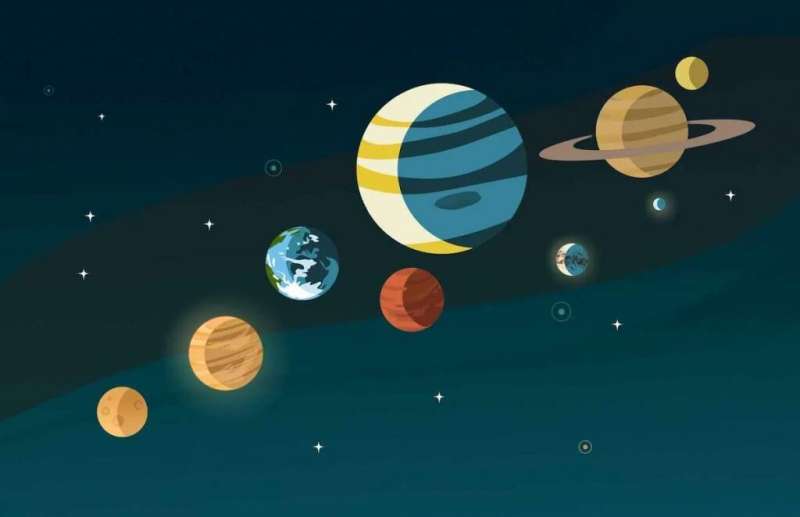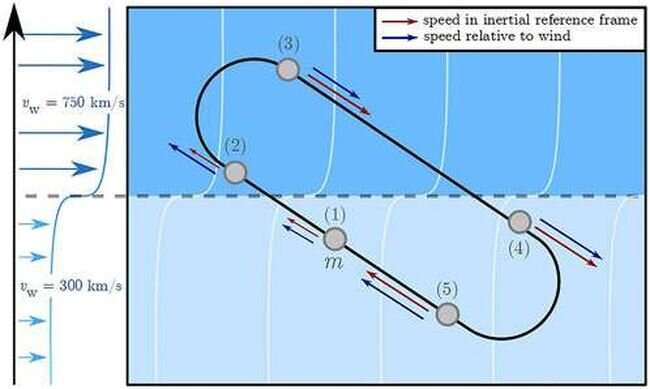
Copernical Team
Maybe we don't see aliens because they're waiting to hear a signal from us first

We've had a long-running series here at UT on potential solutions Fermi paradox—why aren't we able to detect any alien life out there in the Universe? But more possible solutions are being developed all the time. Now, another paper adds some additional theory to one of the more popular solutions—that aliens are just too busy to care about us.
The paper, released on arXiv, was written by Amri Wandel of the Racah Institute of Physics at the Hebrew University of Jerusalem. It makes two basic assumptions. First, aliens don't really care about planets with life on them. Second, they would care if they could detect intelligent life on one.
For the first assumption to be valid, it would help if the occurrence of "biotic" (i.e., having biology) planets is widespread. In that case, even advanced civilizations might not have enough resources to devote to fully exploring those planets, especially in the form of an actual probe.
Proposing a new idea for spacecraft propulsion that involves dynamic soaring

A team of researchers from McGill University and the Tau Zero Foundation is proposing a new idea for faster spacecraft propulsion that involves dynamic soaring. In their paper published in the journal Frontiers in Space Technology, the group outlines the idea of dynamic soaring as it applies to a speedy way to move through space and other possible uses for it.
Over the past several decades, as human-built space vehicles have made their way to many of the planets and moons in our solar system, it has become clear that a means is required for creating spacecraft that can get to distant destinations in space much faster.
Coming soon: MTG The Next Generation
 Video:
00:00:48
Video:
00:00:48
One week today, the first of a new generation of weather satellites will take to the skies. The Meteosat Third Generation system is the most complex and innovative meteorological satellite system ever built. It will bring new capabilities to monitor weather, climate and the environment from space like never before – promising to further bolster Europe’s leadership in weather forecasting.
Join us for the live launch coverage of the Metetosat Third Generation Imager on 13 December on ESA Web TV.
China's Shenzhou-14 astronauts return safely, accomplishing many "firsts"
 Three Chinese astronauts on board the Shenzhou-14 manned spaceship returned to Earth safely on Sunday, after accomplishing many "firsts" during their six-month space station mission.
Shenzhou-14's return capsule, carrying astronauts Chen Dong, Liu Yang and Cai Xuzhe, touched down at the Dongfeng landing site in north China's Inner Mongolia Autonomous Region at 8:09 p.m. Beijing Time, accor
Three Chinese astronauts on board the Shenzhou-14 manned spaceship returned to Earth safely on Sunday, after accomplishing many "firsts" during their six-month space station mission.
Shenzhou-14's return capsule, carrying astronauts Chen Dong, Liu Yang and Cai Xuzhe, touched down at the Dongfeng landing site in north China's Inner Mongolia Autonomous Region at 8:09 p.m. Beijing Time, accor Space Software provider Antaris announces launch readiness of world's first cloud-built demonstration satellite
 Antaris, the software platform provider for space, says that the first-ever satellite fully conceived, designed and manufactured using the company's end-to-end software is ready for launch. Creation of the satellite, dubbed JANUS-1, involved eight organizations spanning seven countries collaborating virtually through the Antaris cloud-based platform, which features open APIs and core open source
Antaris, the software platform provider for space, says that the first-ever satellite fully conceived, designed and manufactured using the company's end-to-end software is ready for launch. Creation of the satellite, dubbed JANUS-1, involved eight organizations spanning seven countries collaborating virtually through the Antaris cloud-based platform, which features open APIs and core open source NOAA approves Maxar to provide non-earth imaging services to government and commercial customers
 Maxar Technologies (NYSE:MAXR) (TSX:MAXR), provider of comprehensive space solutions and secure, precise, geospatial intelligence, has announced that the National Oceanic and Atmospheric Administration (NOAA) has modified Maxar's remote sensing license to enable the non-Earth imaging (NEI) capability for its current constellation on orbit as well as its next-generation WorldView Legion satellite
Maxar Technologies (NYSE:MAXR) (TSX:MAXR), provider of comprehensive space solutions and secure, precise, geospatial intelligence, has announced that the National Oceanic and Atmospheric Administration (NOAA) has modified Maxar's remote sensing license to enable the non-Earth imaging (NEI) capability for its current constellation on orbit as well as its next-generation WorldView Legion satellite Terran Orbital assists demonstration of 1.4 Terabyte Single-Pass Optical Downlink for Pathfinder TD3 Satellite
 Terran Orbital Corporation (NYSE: LLAP), a global leader in satellite-based solutions primarily serving the aerospace and defense industries, has announced its contribution to the successful demonstration of a record-breaking 1.4-terabytes of data delivered from space to ground by an optical downlink in a single pass.
The demonstration connected the TeraByte InfraRed Delivery (TBIRD) laser
Terran Orbital Corporation (NYSE: LLAP), a global leader in satellite-based solutions primarily serving the aerospace and defense industries, has announced its contribution to the successful demonstration of a record-breaking 1.4-terabytes of data delivered from space to ground by an optical downlink in a single pass.
The demonstration connected the TeraByte InfraRed Delivery (TBIRD) laser Cosmic ray counts hidden in spacecraft data highlight influence of solar cycle at Mars and Venus
 Measurements by ESA's long-serving twin missions, Mars Express and Venus Express, have captured the dance between the intensity of high-energy cosmic rays and the influence of the Sun's activity across our inner Solar System.
A comparison of data from the ASPERA plasma sensor, an instrument carried by both spacecraft, with the number of sunspots visible on the surface of the Sun shows how
Measurements by ESA's long-serving twin missions, Mars Express and Venus Express, have captured the dance between the intensity of high-energy cosmic rays and the influence of the Sun's activity across our inner Solar System.
A comparison of data from the ASPERA plasma sensor, an instrument carried by both spacecraft, with the number of sunspots visible on the surface of the Sun shows how NASA's Roman Mission completes key optical components
 Engineers at Ball Aerospace, one of the industrial partners for NASA's Nancy Grace Roman Space Telescope, have installed and aligned the element wheel assembly (pictured above) into the telescope's Wide Field Instrument. The assembly contains eight science filters, two dispersive elements (a grism and prism) and a "blank" element (used for internal calibration) that will help scientists solve so
Engineers at Ball Aerospace, one of the industrial partners for NASA's Nancy Grace Roman Space Telescope, have installed and aligned the element wheel assembly (pictured above) into the telescope's Wide Field Instrument. The assembly contains eight science filters, two dispersive elements (a grism and prism) and a "blank" element (used for internal calibration) that will help scientists solve so Sierra Space selected by Maxar to provide solar power solutions for constellation of proliferated LEO satellites
 Sierra Space, a leading space company building an end-to-end business and technology platform in space to benefit life on Earth, reports that the company won a significant space defense contract with Maxar. Under the agreement, Sierra Space will provide revolutionary solar power solutions and production capability.
This contract will support a constellation of 14 satellites that use Maxar'
Sierra Space, a leading space company building an end-to-end business and technology platform in space to benefit life on Earth, reports that the company won a significant space defense contract with Maxar. Under the agreement, Sierra Space will provide revolutionary solar power solutions and production capability.
This contract will support a constellation of 14 satellites that use Maxar' 
